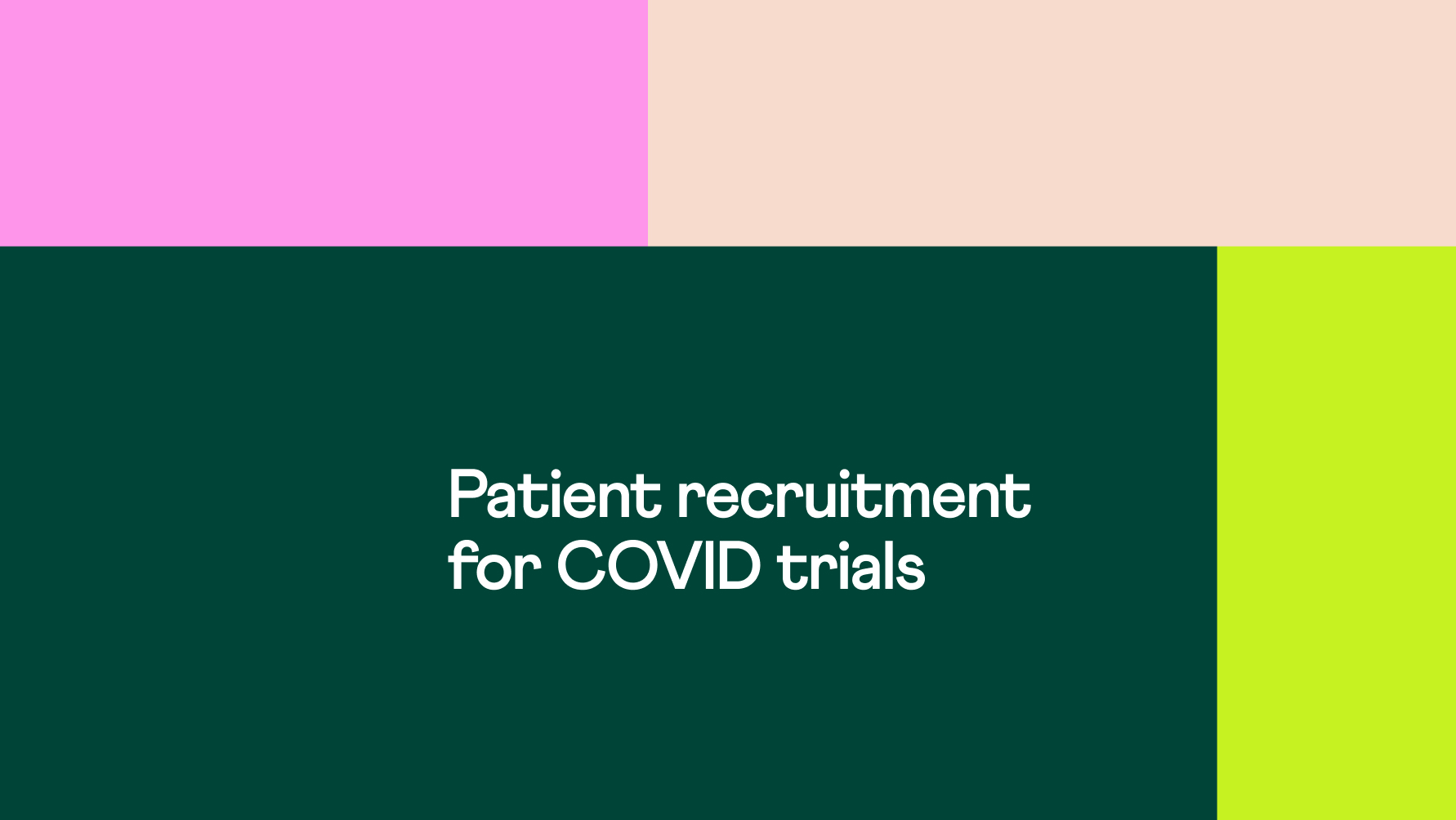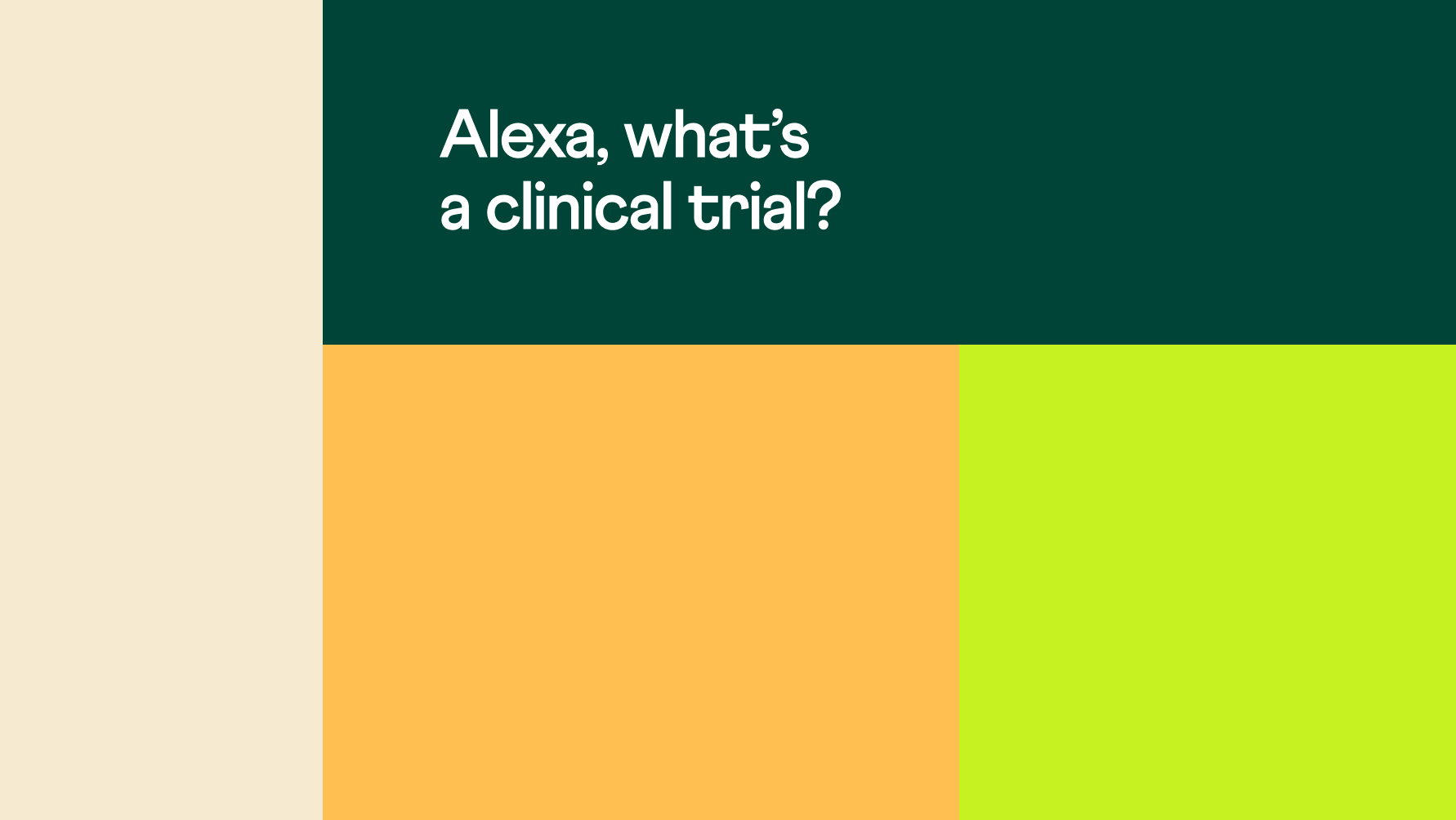
Patient recruitment for COVID trials
Recently, the UK’s Secretary of State for Health and Social Care, Matt Hancock, appealed for more volunteers for COVID-19 clinical trials due to patient recruitment concerns. He explained that “the bigger the trials, the better the data and the faster we can roll-out the treatments”. With 50% of preCOVID-19 clinical trials delayed due to patient recruitment and early Chinese COVID-19 trials facing similar issues, it was a pragmatic move – but not a complete solution. In any clinical trial, activation of volunteers is just one step in the recruitment process, among other complex challenges. Beyond the practicalities of protocols and inclusion/exclusion criteria, there is also the ‘human’ element – where the ultimate decision to enrol or walk away hinges on a delicate balance between a patient’s fears and aspirations. Patient recruitment communications are central to this decision-making process, with the competency of communication by recruiters strongly influencing intentions to enrol.
We are all too familiar with the role that trial communications play in the success of a clinical trial. To understand the communication requirements for COVID-19 clinical trials, Havas Lynx Faze partnered with Day One and Respondi to survey over 1,000 members of the general public. The responses highlighted some clear issues that can be addressed in patient-facing communication strategies for COVID-19 clinical trials (and beyond).
1. Perceived risk of clinical trials by the general public is exaggerated
The audiences for these trials do not have a balanced understanding of trial safety. Their beliefs about trials are formed mostly by the media who prioritise bad news over good news – ‘if it bleeds it leads’. The measures taken to ensure the process is as safe as possible should be spelled out clearly, as our research shows 54% of people are put off clinical trials by the ‘risk of dying’ or ‘becoming severely ill’. Risk of participation must also be quantified and expressed in a way that patients can understand.
2. State the obvious and make it explicit
Through working in the industry, you attain a level of knowledge that it can be assumed not everybody has. This could be considered the curse of expertise. Being deliberately infected with COVID-19 was a significant barrier to participation for 24% of survey respondents. If infecting participants with the SARS-CoV-2 virus is not part of the protocol, then this must be spelled out in black and white. Failure to state the obvious can inadvertently harm recruitment for a trial that may otherwise have met all participant expectations.
3. Special attention should be given to the over 55s
Our research showed that those over the age of 55 are less likely to participate in COVID-19 trials. Media broadcasts have done a fantastic job of communicating who are at greatest risk of developing severe or deadly symptoms. Older people are most at risk and the general public has heard this message loud and clear. The measures taken to protect those most vulnerable should be communicated clearly. For example, if you are utilising telemedicine, additional medical care, alternative premises or PPE for your trial, this must be clearly communicated to those more vulnerable populations as a priority.
4. Talk about the bigger picture
The pandemic has given rise to an increase in social responsibility and community spirit. Which may explain why 73% of responders chose at least one altruistic reason as a key incentive to join a COVID-19 trial. So be sure to communicate clearly how your trial helps in the national or global efforts against COVID-19 and how volunteers have an essential role to play. This will ensure that members of the public with a desire to contribute more will quickly recognise that your clinical trial offers an opportunity to do so.
5. The younger generation is motivated differently
The under-25s are perhaps a surprising subset of people that were found to be less likely to participate in a COVID-19 clinical trial. The research found this group were particularly motivated by paid participation and the desire to help their families. So, in addition to altruistic benefits to participation, clearly disclosing any financial incentive may help to recruit younger participants. Inversely, if you lead with a paid incentive then you can expect a younger population to respond.
These five strategies address the key findings from the research and, if implemented correctly, will improve recruitment for COVID-19 trials and help bridge the education gap between the reality of clinical trials and the general public’s perception of them. This research, like others before it, suggests that a more sustainable and broadly useful communication strategy is one that improves the ‘trial literacy’ of the general public.
Originally published in PMLive


